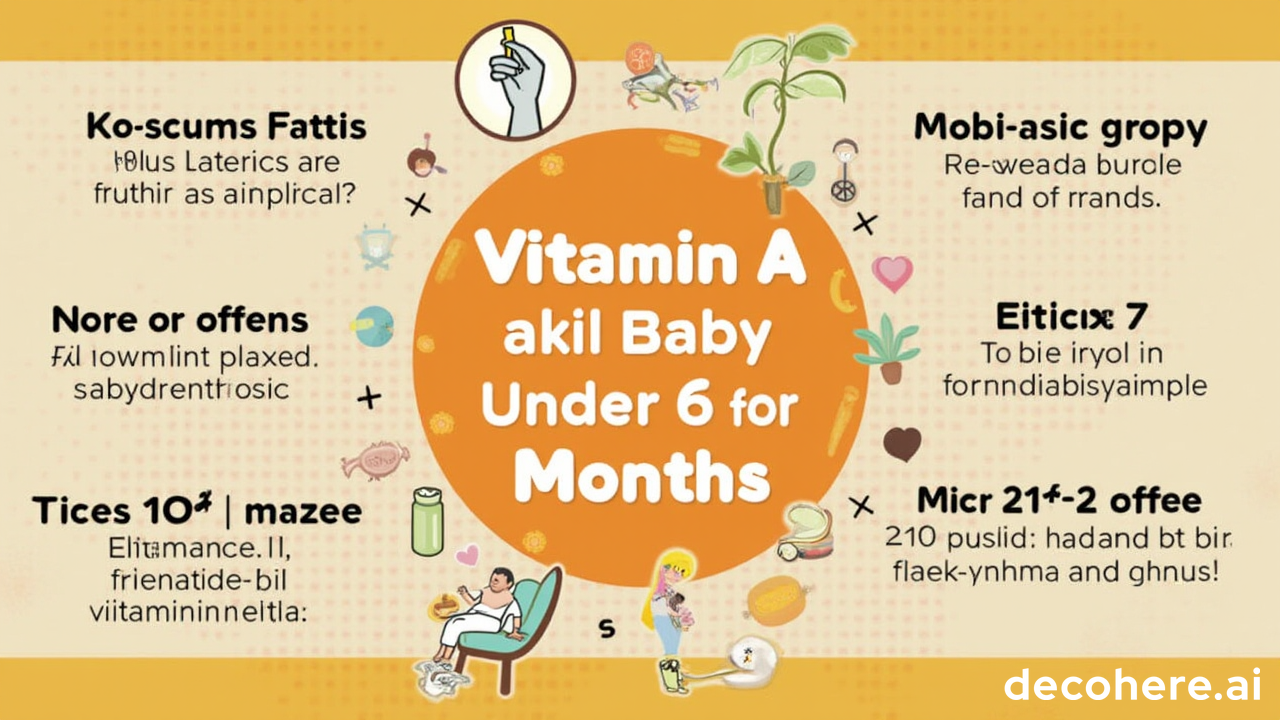Vitamin A is a vital nutrient known for its role in supporting vision, immune function, and overall growth and development. When it comes to infants, especially those under six months of age, understanding the importance and appropriate sources of vitamin A is crucial for ensuring their healthy start in life. This article delves into the significance of vitamin A for babies under six months, safe intake levels, and practical recommendations for parents and caregivers.
The Role of Vitamin A in Infant Health
Vitamin A plays several critical roles in the body. It contributes to the development and maintenance of healthy skin and mucous membranes, enhances immune responses, supports bone growth, and is integral to good vision, particularly night vision. For infants, these functions are vital as their bodies and immune systems are rapidly growing and adapting during the first months of life.
Infants under six months are especially vulnerable to vitamin A deficiency due to their rapid growth and developing immune systems. Deficiency can lead to increased susceptibility to infections such as measles and diarrhea, and in severe cases, it may cause vision problems and even blindness. Therefore, ensuring adequate vitamin A intake during this early stage is a critical component of infant nutrition.
Natural Sources of Vitamin A for Babies Under 6 Months
Breastmilk is the primary and most appropriate source of nutrition for infants under six months old, including vitamin A. The vitamin A content in breastmilk generally reflects the mother’s diet and vitamin A status. Colostrum, the first form of breastmilk produced immediately after birth, is particularly rich in vitamin A, providing newborns with a valuable supply during their first days of life.
For mothers, maintaining a balanced diet rich in vitamin A — found in foods such as liver, dairy products, eggs, and orange or dark green vegetables (like carrots, sweet potatoes, and spinach) — helps ensure that their breastmilk contains adequate levels of the vitamin. In some regions where vitamin A deficiency is common, health authorities may recommend vitamin A supplementation for lactating mothers to boost the nutrient content in breastmilk.
Supplementation and Safety Considerations
Generally, vitamin A supplementation is not recommended for healthy, full-term infants under six months who are exclusively breastfed, provided their mothers have adequate vitamin A intake. However, in areas with high rates of vitamin A deficiency or where breastfeeding is not feasible or sufficient, healthcare providers may consider supplementation on a case-by-case basis.
It is important to note that vitamin A is a fat-soluble vitamin, meaning excessive intake can accumulate in the body and potentially cause toxicity. Symptoms of vitamin A toxicity in infants may include irritability, nausea, vomiting, and in severe cases, increased intracranial pressure or liver abnormalities. Therefore, any supplementation should always be under strict medical guidance, ensuring doses are safe and appropriate for the infant’s age and health status.
Transitioning Beyond Six Months
Around six months of age, when complementary foods are introduced, it becomes important to include vitamin A-rich foods in the infant’s diet to continue supporting growth and immune health. Appropriate complementary foods might include pureed carrots, pumpkin, sweet potatoes, or fruits like mango and papaya. These natural sources not only provide vitamin A but also contribute to the diversity and nutritional quality of the infant’s meals.
Health authorities worldwide recommend a balanced approach to achieving adequate vitamin A intake as infants grow, emphasizing breastfeeding while gradually introducing complementary foods. In areas with a high prevalence of vitamin A deficiency, periodic vitamin A supplementation programs for children may be implemented as part of public health strategies.
Conclusion
Vitamin A is an essential nutrient that plays a key role in the health and development of infants under six months, primarily provided through breastmilk when the mother’s nutritional status is adequate. Parents and caregivers should focus on supporting maternal nutrition during pregnancy and lactation to ensure infants receive sufficient vitamin A naturally. Supplementation in young infants should only be done under medical supervision to avoid the risks associated with excessive intake. As infants begin eating complementary foods after six months, incorporating vitamin A-rich options helps sustain their nutritional needs and promotes continued healthy growth.
By understanding the critical role of vitamin A and following recommended nutritional practices, parents can confidently support their baby’s development and long-term health from the very start.
